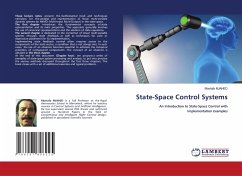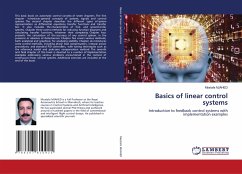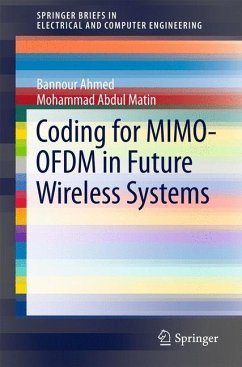
State-Space Control Systems
An Introduction to State-Space Control with Implementation Examples
Versandkostenfrei!
Versandfertig in 6-10 Tagen
40,99 €
inkl. MwSt.

PAYBACK Punkte
20 °P sammeln!
These lecture notes present the mathematical tools and techniques necessary for the analysis and representation of linear multi-variable dynamic systems (or MIMO: Multi-Input Multi-Output) in the state space.The first chapter introduces the fundamental concepts of state representation and its main properties. This approach generally involves the use of canonical representations and the solution of state equations. The second chapter is dedicated to the correction of linear multi-variable systems through state feedback, as well as techniques for pole or eigenvalue placement for its implementati...
These lecture notes present the mathematical tools and techniques necessary for the analysis and representation of linear multi-variable dynamic systems (or MIMO: Multi-Input Multi-Output) in the state space.The first chapter introduces the fundamental concepts of state representation and its main properties. This approach generally involves the use of canonical representations and the solution of state equations. The second chapter is dedicated to the correction of linear multi-variable systems through state feedback, as well as techniques for pole or eigenvalue placement for its implementation.Implementing state feedback control often requires access to the components of the state vector, a condition that is not always met. In such cases, the use of an observer becomes essential to estimate the temporal evolution of unmeasured components. The concept of an observer is detailed in the third chapter.At the end of this document (Chapter four), we propose a series of examples of state-space system processing and analysis, to put into practice the various methods discussed throughout the first three chapters. The book closes with a set of additional exercises and typical problems.














